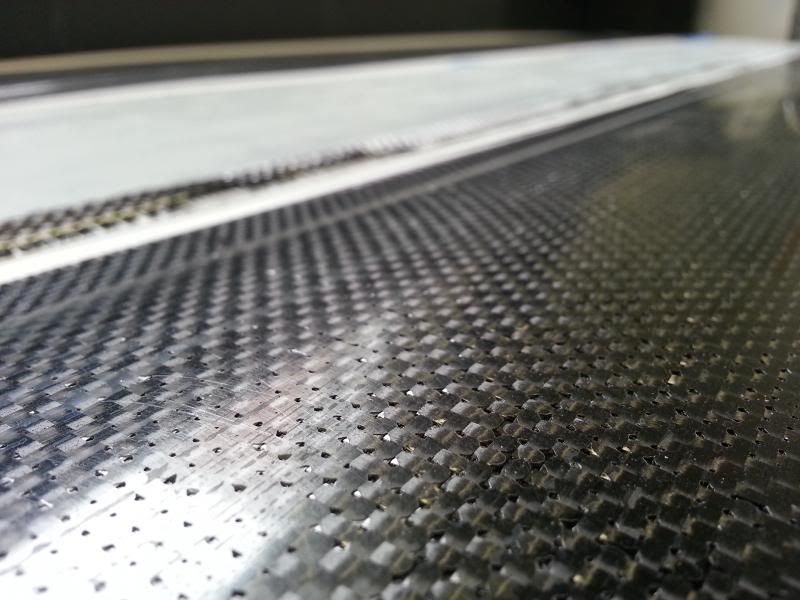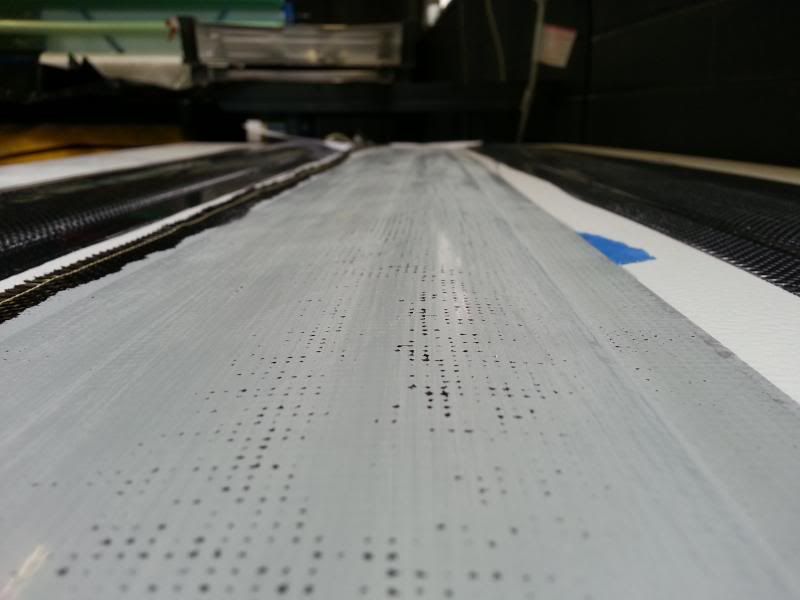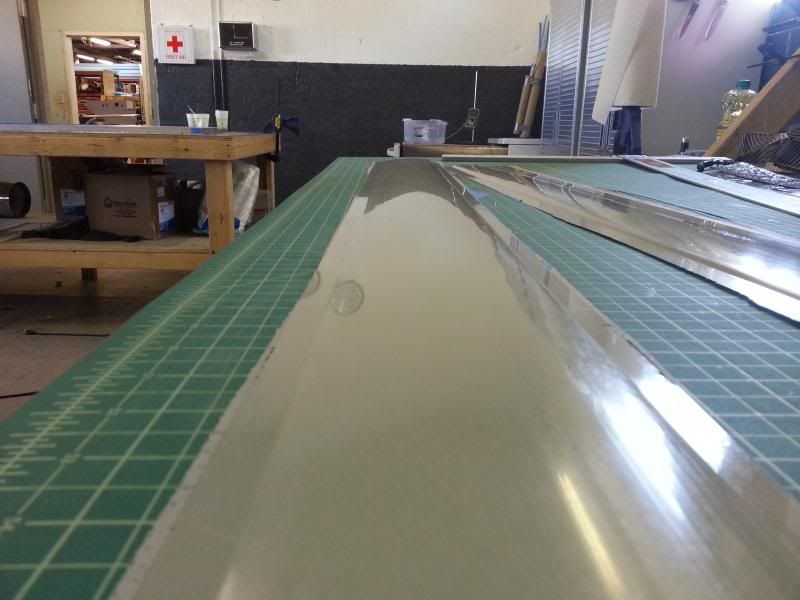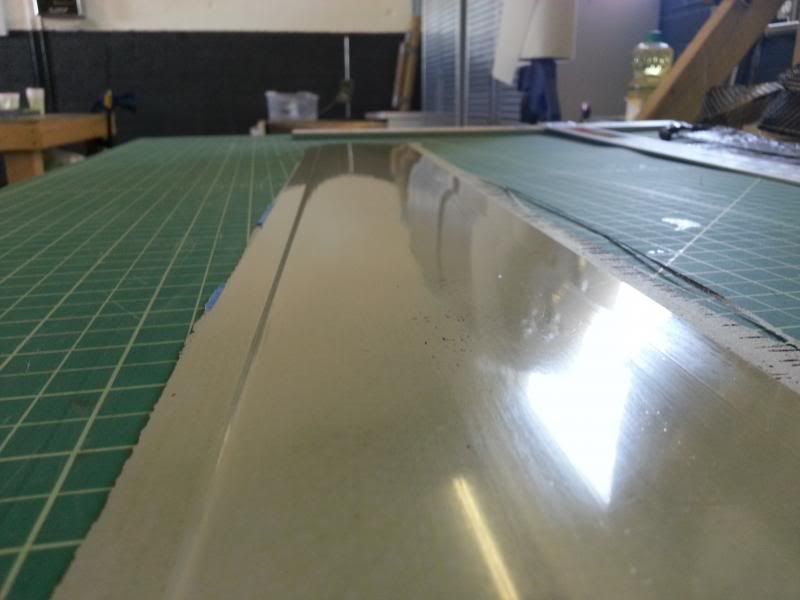I know this has been discussed pretty exhaustively on here and i have read most of those threads but please hear me out.
We are making aerospace components and have had a constant problem with voids and pinholes.
We currently measure exact amounts of resin required for the layup, aiming for a 50% Vf though we would like to move up if possible to reduce the weight even further. Our peel ply is not perforated and we cure under full vacuum ~ 23inHg. The layup schedule is: 3k plain weave, 3.7oz uni, 3.7oz uni. The uni does not have any binder threads in it.
I have not seen anyone referring to the amount of epoxy or Vf they use when they achieve pinhole free parts. Nor do they seem to commonly use unidirectional. All of our parts are almost exclusively unidirectional fabric which i think could cause a large problem with attempting to free any kind of air bubbles from the surface, especially at full vacuum?
We do have a fish eye problem when laying up but because we clean the mold after every application we apply new release agent, mostly max only. Is this unnecessary even when cleaning the mold with acetone? The molds are cut from aluminum and/or renShape. or is the fish eye even an issue when using non perforated peel ply?
So here are the things we think we could try in order to fix our surface finish problem without increasing the weight of the parts:
1 - degas resin before laying up and be very careful with brushes or non absorbent rollers when placing fabric into the mold
2 - let the first layer gel without vacuum and then lay in all remaining layers and bagging.
3 - better release agent to stop the paint from tearing off into the mold during demoulding. We are very okay with the paint bridging over pin holes if that is possible. The goal is minimum weight here.
4 - let paint dry COMPLETELY before laying up into it. ~12 hours.
I would love to hear what you guys think as far as how we should move forward from here.
-Thanks
Carlos





